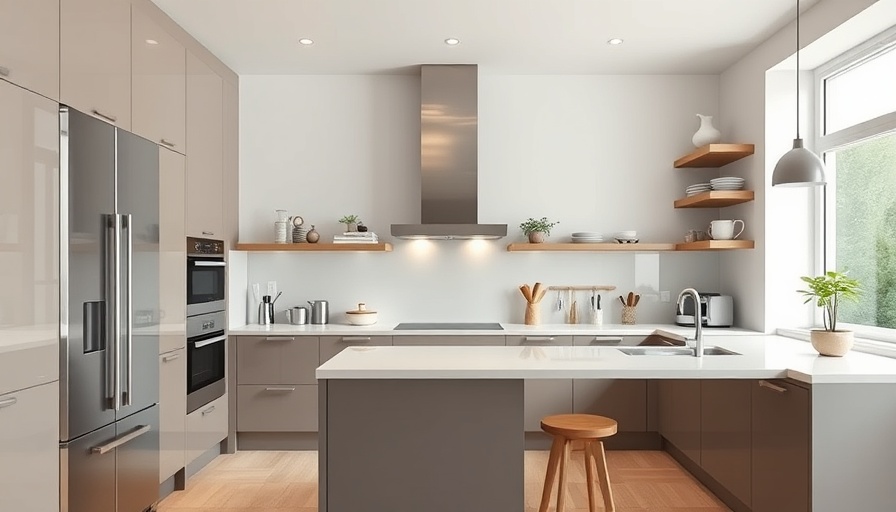
Make Every Square Foot Count in Your Small Kitchen
When it comes to small kitchens, every inch truly counts. For homeowners in southeast Michigan, maximizing functionality without sacrificing style is crucial. Whether you're looking to remodel or simply enhance your existing layout, innovative space-saving hacks can transform your compact cooking area into a charming and efficient powerhouse.
Declutter for Success: The First Step to Small Kitchen Mastery
To kick off your space-saving journey, start with a ruthless declutter. It's all too easy to accumulate gadgets that collect dust. Take a look at that bread maker or third set of measuring cups. If you haven’t used them in over a year, it’s time to let them go. Donate or sell these seldom-used items and free up valuable space for kitchen essentials. Remember, a clutter-free kitchen is an efficient kitchen.
Organizing Smartly: Creating an Efficient Kitchen
A well-organized kitchen not only looks good but works better. Categorizing items can be a game-changer. Group your essential tools—a drawer for baking, another for cooking, etc.—and invest in clear containers for your dry goods. This makes it easy to find what you need and maintain a tidy space amidst the flurry of cooking.
Maximize Cabinet Space and Optimize Storage
Don’t let your cabinets go to waste! Effective small kitchen remodeling can involve installing organizational features like shelf risers, pull-out trays, and lazy Susans to double your storage capabilities. Make sure every inch of your cabinets is utilized, from the top shelf to those hard-to-reach back corners. Don’t forget vertical storage solutions, such as wall-mounted shelves and hooks, to maximize available space.
Hidden Storage Hacks: Discover the Potential of Every Nook
Your kitchen is teeming with potential storage spots. Look into over-the-door organizers for cabinets and pantries, which can be perfect for spices and cleaning supplies. Have you ever considered toe-kick drawers? These hidden gems can store bakeware or cutting boards while seamlessly blending into the design of your cabinets.
Multi-Purpose Furniture: A Game Changer for Small Kitchens
In tight spaces, multi-functional furniture proves to be invaluable. Think along the lines of a foldable dining table that also serves as a prep area, or stools with built-in storage compartments. These versatile pieces ensure that everything in your kitchen has a dual purpose, maximizing use and minimizing clutter.
Appliance Management: Keep Counter Space Clutter-Free
Your countertop is one of the most important areas in a small kitchen, much like prime real estate. To keep your space clear, choose compact appliances or those that serve multiple functions. For instance, investing in a toaster oven that functions as an air fryer can free up significant counter space and enhance your cooking capabilities.
Future Predictions: Evolving Trends in Small Kitchen Design
As people's lifestyles become more dynamic, the trend towards smaller, more functional kitchens will likely continue. Advances in technology will introduce more space-saving appliances, while smart design solutions will capitalize on functionality while enhancing aesthetic appeal, allowing for both beauty and practicality.
Final Thoughts on Small Kitchen Efficiency
Creating a small kitchen that maximizes efficiency and charm is entirely possible with strategic hacks and thoughtful design. So, whether you decide to dive into a full remodel or make small adjustments, remember that every effort can yield significant results. Each thoughtful improvement contributes not just to functionality but also to the overall enjoyment of your home.
If you've been inspired by these space-saving strategies, consider implementing them to see your small kitchen transform into a functional haven!
 Add Row
Add Row  Add
Add 




Write A Comment